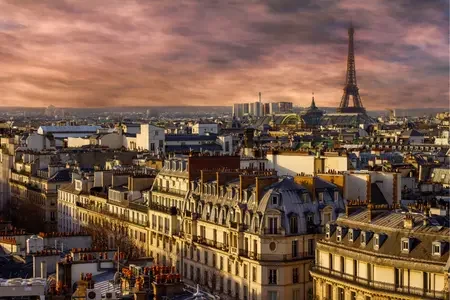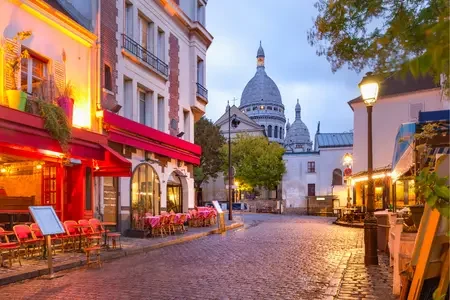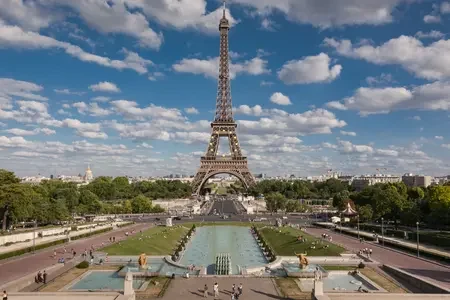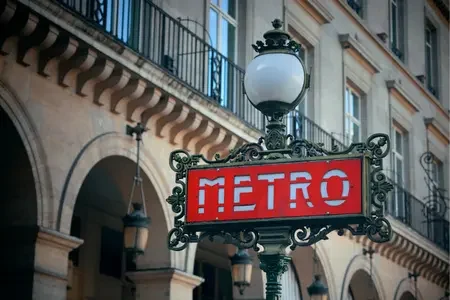Paris, the romantic heart of Europe, is a city that lives up to every expectation. With its iconic landmarks, world-class art, charming cafés, haute cuisine, and effortlessly chic style, it’s no wonder Paris is one of the most visited cities in the world. Whether you’re planning your first Parisian getaway or returning for another dose of magic, this guide has everything you need. Discover famous attractions, delicious dining, top places to stay, and practical travel tips to help you make the most of your time in the French capital.
Paris is more than just a destination—it’s a feeling. Whether you’re admiring art in the Louvre, enjoying a candlelit dinner by the Seine, or simply soaking in the Parisian lifestyle, the City of Light offers unforgettable memories at every turn. With its perfect blend of culture, cuisine, fashion, and charm, Paris continues to enchant travellers from around the globe. Plan your Paris escape and get ready to fall in love, one cobbled street at a time.
Currency: Euro
Average temp: 15°C/60°F
Average flight time from UK: 1.5 Hours
Time Difference: +1 hours

From five-star elegance to stylish boutique hotels, Paris offers a wide variety of accommodation to suit every traveller:
Luxury Hotels: Stay in Parisian splendour at places like Le Meurice, The Ritz Paris, or Hôtel Plaza Athénée, known for their timeless elegance and exceptional service.
Boutique Hotels: Try Hôtel Recamier in Saint-Germain or Le Pavillon de la Reine in the Marais for unique charm and local character.
Budget-Friendly Options: Travelling on a budget? Hotels like Hôtel de la Porte Dorée or Mama Shelter Paris East provide affordable comfort without compromising on style or location.

Paris has a mild, temperate climate that makes it an attractive destination year-round:
Spring (March to May): The city comes alive with blossoms and café terraces. Expect mild days and cool nights—perfect for riverside walks and sightseeing.
Summer (June to August): Warm and lively with lots of outdoor events. Highs are usually between 22–26°C, though occasional heatwaves can reach 30°C+.
Autumn (September to November): The leaves turn golden, the crowds thin out, and the city takes on a cosy, romantic feel. Temperatures range from 10–20°C.
Winter (December to February): Expect chilly days and early evenings. While snow is rare, Paris in winter is magical, especially with festive lights and Christmas markets.

French cuisine is world-renowned, and in Paris, food is a full-blown affair. From flaky pastries to fine dining, every meal is a moment to savour:
Café Culture: Start your day the Parisian way with a buttery croissant and espresso at a pavement café—people-watching is practically a sport here.
Classic French Dishes: Try traditional favourites like boeuf bourguignon, duck confit, escargots, and French onion soup at authentic bistros throughout the city.
Michelin-Starred Dining: Celebrate a special night with a table at Le Jules Verne (in the Eiffel Tower), Guy Savoy, or Pierre Gagnaire for unforgettable gourmet experiences.
Markets & Street Food: Explore neighbourhood markets like Marché Bastille for cheese, bread, and charcuterie, or grab a crêpe from a street vendor for a tasty snack on the go.
Sweet Treats: Paris is a dessert dream—macarons from Ladurée, éclairs from L’Éclair de Génie, and melt-in-the-mouth tarts from Angelina or Pierre Hermé are a must.

Paris is home to some of the most iconic sights in the world. Each monument tells its own story, offering a unique perspective on the city’s rich history and culture:
Eiffel Tower: No trip to Paris is complete without seeing this world-famous landmark. Take the lift to the top for stunning panoramic views of the city skyline.
Louvre Museum: Home to the Mona Lisa, the Louvre is the world’s largest art museum and an architectural masterpiece in its own right.
Notre-Dame Cathedral: Though under restoration, this Gothic gem remains a beloved symbol of the city and can still be admired from the outside.
Sacré-Cœur Basilica: Perched on Montmartre hill, this stunning white basilica offers some of the best views of Paris and is surrounded by charming streets and artists’ studios.
Arc de Triomphe & Champs-Élysées: Climb the Arc for another great viewpoint and enjoy shopping or strolling along the legendary avenue.

Currency: The Euro (€) is used throughout France. Credit and debit cards are widely accepted, but carrying some cash is helpful for cafés and small shops.
Language: French is the official language. While many people in tourist areas speak English, learning a few key phrases will go a long way.
Transport: Paris has an excellent metro and bus system. The Paris Visite pass is handy for unlimited travel within the city. Walking is also a great way to explore.
Tipping: Service is usually included in restaurant bills, but it’s common to round up or leave small change if the service was good.
Safety: Paris is generally safe for tourists, though it’s wise to watch for pickpockets in busy areas like the metro or near major attractions.
Stay covered for peace of mind on your journey.
Find the perfect vehicle for your adventure.
Discover must-see sights and experiences.
Enhance your trip with added conveniences.
153 Main Street Kilwinning, Ayrshire | KA13 6EQ
10 Main Street Largs,
Ayrshire | KA30 8AB
66-68 Main Street Prestwick, Ayrshire | KA9 1PA
Telephone: 0300 373 0800
Email: enquiries@thornetravel.com
All content and pricing on our website is subject to availability and may change out with our control. Prices advertised are per person, based on 2 sharing unless otherwise specified. Prices are a guide and may not include relevant supplements and/or benefits. Images and descriptions are to be used as a guide as these can vary and your Holiday Expert will confirm at the time of booking. Please call and speak to our Holiday Experts for up to date, accurate pricing and advice
Site by MeltedHouse Digital